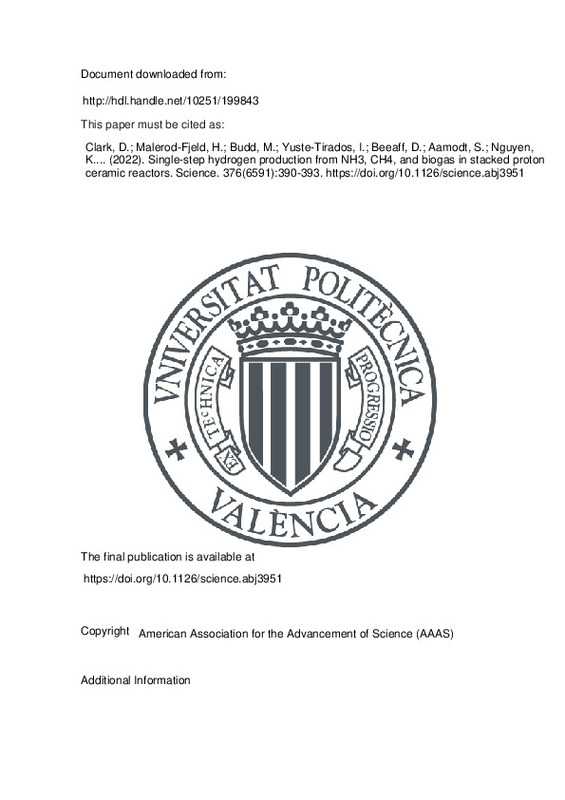JavaScript is disabled for your browser. Some features of this site may not work without it.
Buscar en RiuNet
Listar
Mi cuenta
Estadísticas
Ayuda RiuNet
Admin. UPV
Single-step hydrogen production from NH3, CH4, and biogas in stacked proton ceramic reactors
Mostrar el registro completo del ítem
Clark, D.; Malerod-Fjeld, H.; Budd, M.; Yuste-Tirados, I.; Beeaff, D.; Aamodt, S.; Nguyen, K.... (2022). Single-step hydrogen production from NH3, CH4, and biogas in stacked proton ceramic reactors. Science. 376(6591):390-393. https://doi.org/10.1126/science.abj3951
Por favor, use este identificador para citar o enlazar este ítem: http://hdl.handle.net/10251/199843
Ficheros en el ítem
Metadatos del ítem
| Título: | Single-step hydrogen production from NH3, CH4, and biogas in stacked proton ceramic reactors | |
| Autor: | Clark, Daniel Malerod-Fjeld, Harald Budd, Michael Yuste-Tirados, Irene Beeaff, Dustin Aamodt, Simen Nguyen, Kevin Ansaloni, Luca Peters, Thijs Vestre, Per K. Pappas, Dimitrios K. Norby, Truls Bjorheim, Tor S. Kjolseth, Christian | |
| Entidad UPV: |
|
|
| Fecha difusión: |
|
|
| Resumen: |
[EN]
Proton ceramic reactors offer efficient extraction of hydrogen from ammonia, methane, and biogas by coupling endothermic reforming reactions with heat from electrochemical gas separation and compression. Preserving ...[+]
|
|
| Derechos de uso: | Reserva de todos los derechos | |
| Fuente: |
|
|
| DOI: |
|
|
| Editorial: |
|
|
| Versión del editor: | https://doi.org/10.1126/science.abj3951 | |
| Código del Proyecto: |
|
|
| Agradecimientos: |
This work was supported by Norway's Ministry of Petroleum and Energy through the Gassnova project CLIMIT grant 618191 in partnership with Engie SA, Equinor, ExxonMobil, Saudi Aramco, Shell, and TotalEnergies and the Research ...[+]
|
|
| Tipo: |
|







![[Cerrado]](/themes/UPV/images/candado.png)


